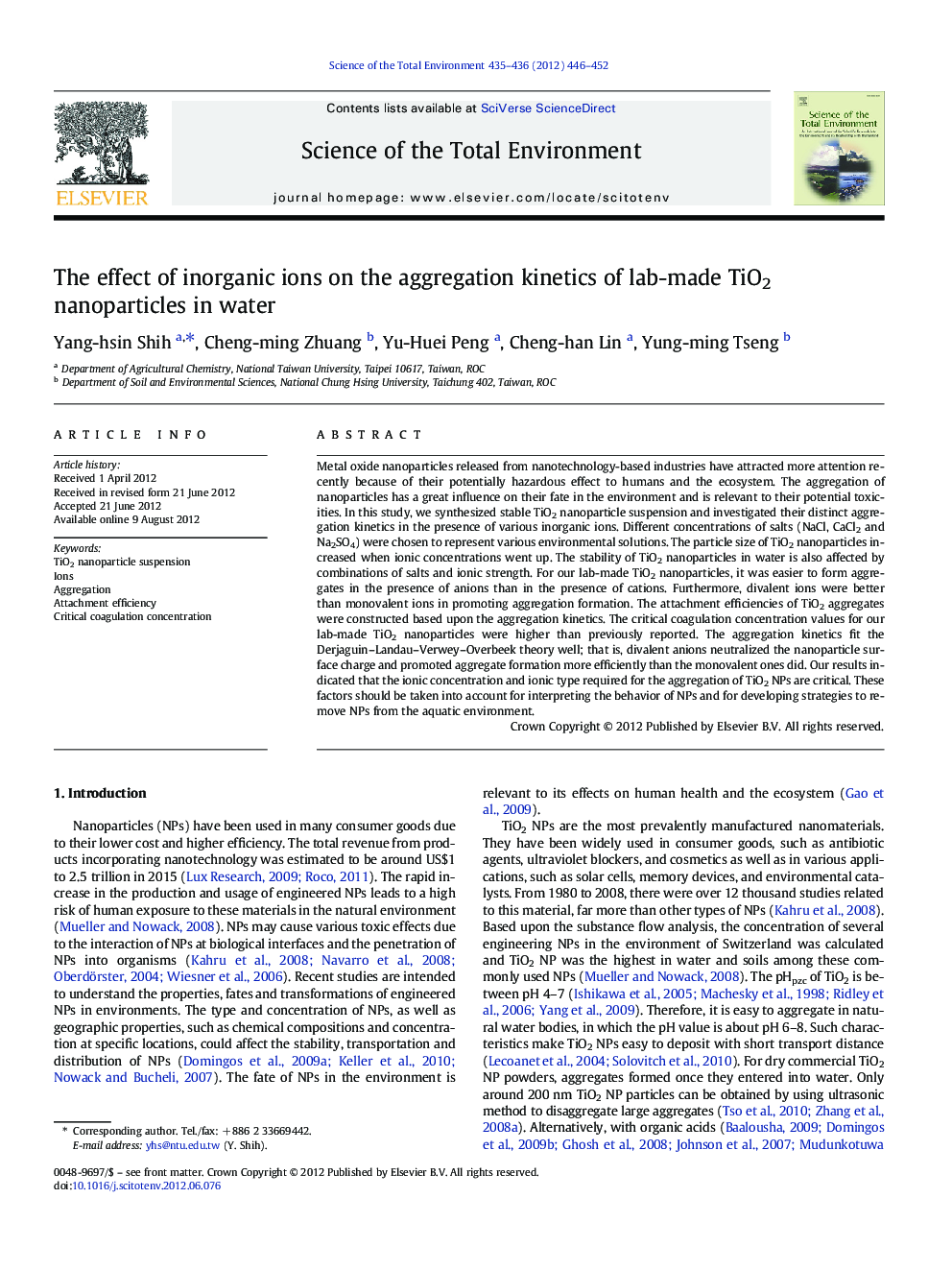| کد مقاله | کد نشریه | سال انتشار | مقاله انگلیسی | نسخه تمام متن |
|---|---|---|---|---|
| 4429282 | 1619817 | 2012 | 7 صفحه PDF | دانلود رایگان |

Metal oxide nanoparticles released from nanotechnology-based industries have attracted more attention recently because of their potentially hazardous effect to humans and the ecosystem. The aggregation of nanoparticles has a great influence on their fate in the environment and is relevant to their potential toxicities. In this study, we synthesized stable TiO2 nanoparticle suspension and investigated their distinct aggregation kinetics in the presence of various inorganic ions. Different concentrations of salts (NaCl, CaCl2 and Na2SO4) were chosen to represent various environmental solutions. The particle size of TiO2 nanoparticles increased when ionic concentrations went up. The stability of TiO2 nanoparticles in water is also affected by combinations of salts and ionic strength. For our lab-made TiO2 nanoparticles, it was easier to form aggregates in the presence of anions than in the presence of cations. Furthermore, divalent ions were better than monovalent ions in promoting aggregation formation. The attachment efficiencies of TiO2 aggregates were constructed based upon the aggregation kinetics. The critical coagulation concentration values for our lab-made TiO2 nanoparticles were higher than previously reported. The aggregation kinetics fit the Derjaguin–Landau–Verwey–Overbeek theory well; that is, divalent anions neutralized the nanoparticle surface charge and promoted aggregate formation more efficiently than the monovalent ones did. Our results indicated that the ionic concentration and ionic type required for the aggregation of TiO2 NPs are critical. These factors should be taken into account for interpreting the behavior of NPs and for developing strategies to remove NPs from the aquatic environment.
► The stabilized TiO2 nanoparticle (NP) in water was synthesized.
► The aggregation of the lab-made TiO2 NP needs a high salt concentration.
► Anions enhance the aggregation more easily than cations.
► Divalent anions were easier than monovalent ones to promote aggregation.
► The stabilized NPs suspend in water and can be treated by precipitation with salts.
Journal: Science of The Total Environment - Volumes 435–436, 1 October 2012, Pages 446–452